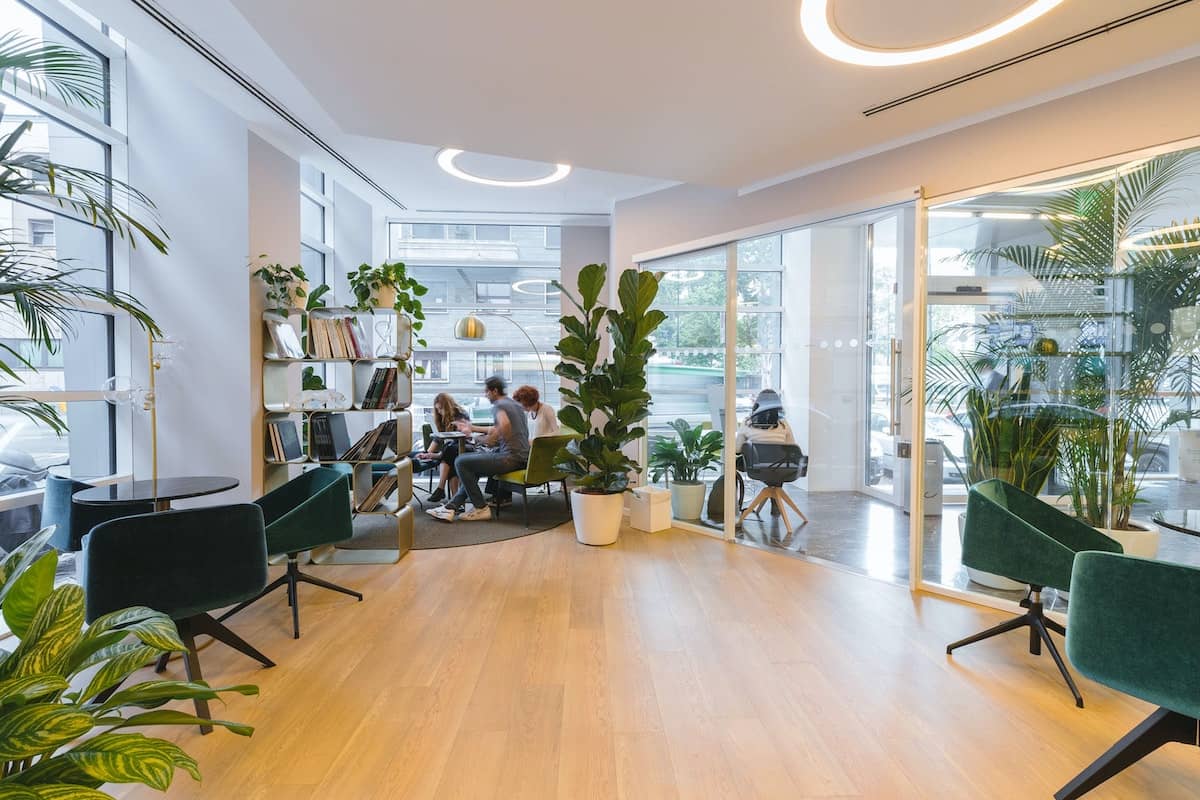In today’s world, sustainability is no longer just a buzzword; it’s a necessity. The impact of human activities on the environment is becoming increasingly evident, prompting individuals and businesses to take action office practices. One area where sustainable practices can make a significant difference is the 오피. In this blog post, we’ll explore eco-friendly solutions for workspaces, discussing their importance, benefits, and practical implementation.
The Environmental Impact of Office Spaces

Before delving into sustainable office practices, it’s essential to understand the environmental impact of traditional office spaces. Offices are notorious for their high energy consumption, resource usage, and waste generation. Here are some key aspects of this impact:
Energy Consumption in Office Buildings
Lighting: Traditional office spaces often use inefficient lighting systems, leading to unnecessary energy consumption. Fluorescent lights, for example, are energy hogs compared to LED alternatives.
HVAC Systems: Heating, ventilation, and air conditioning (HVAC) systems in large office buildings can be energy-intensive. Inefficient HVAC systems can lead to significant energy waste.
Office Equipment: Computers, printers, and other office equipment are typically left on continuously, even when not in use, contributing to energy waste.
Resource Usage
Paper Consumption: Offices are notorious for their reliance on paper, leading to deforestation and resource depletion.
Water Usage: Water wastage in office restrooms and kitchens can be substantial, adding to the strain on water resources.
Waste Generation: Offices generate vast amounts of waste, from paper and plastic to electronic waste (e-waste), which often ends up in landfills.
Transportation and Commuting
The daily commute to and from the office contributes to carbon emissions, traffic congestion, and air pollution. Additionally, the construction and maintenance of office buildings can have a significant environmental footprint.
Benefits of Sustainable Office Practices
While the environmental impact of traditional offices is concerning, adopting sustainable office practices offers a multitude of benefits:
Reduced Environmental Footprint
Implementing eco-friendly solutions can significantly reduce the carbon footprint of office spaces. Energy-efficient lighting, smart HVAC systems, and sustainable materials can all contribute to lower energy consumption and resource usage.
Cost Savings
Sustainability often goes hand in hand with cost savings. Energy-efficient practices can lead to reduced utility bills, while waste reduction efforts can lower disposal costs. Moreover, sustainable offices are often eligible for tax incentives and rebates.
Enhanced Corporate Social Responsibility
Sustainable office practices demonstrate a commitment to corporate social responsibility. Such initiatives can improve a company’s reputation and attractiveness to socially conscious consumers and employees.
Improved Employee Satisfaction and Retention

A sustainable workplace can boost employee morale and job satisfaction. Employees are more likely to feel proud of their company’s sustainability efforts and are often more engaged and productive in such environments.
Eco-Friendly Office Design
One of the most effective ways to create a sustainable office is through eco-friendly design principles. Here are some strategies:
Energy-Efficient Lighting
LED Lighting: LED lights are not only energy-efficient but also have a longer lifespan, reducing replacement and maintenance costs.
Motion Sensors: Installing motion sensors in office spaces can ensure that lights are only on when needed, reducing energy waste.
Smart HVAC Systems
Programmable Thermostats: Programmable thermostats allow for precise temperature control, preventing overcooling or overheating of office spaces.
Zoning: Dividing the office into zones with separate temperature controls can further enhance energy efficiency.
Energy-Efficient Office Practices Equipment
Energy Star-Rated Devices: When purchasing office equipment, choose Energy Star-rated products, which meet stringent energy efficiency standards.
Power Management Tools: Implement power management settings on computers and printers to automatically enter sleep mode when not in use.
Water-Saving Strategies
Low-Flow Faucets and Toilets: Installing low-flow fixtures can reduce water consumption in restrooms and kitchens.
Greywater Systems: Recycle and reuse greywater (non-potable water) for purposes like irrigation.
Sustainable Materials and Furniture
Recycled and Upcycled Furniture: Choose office furniture made from recycled or upcycled materials to reduce the demand for new resources.
Non-Toxic Materials: Opt for materials that don’t release harmful chemicals into the air, improving indoor air quality.
Indoor Plants for Air Quality
Introducing indoor plants into office spaces not only enhances aesthetics but also improves air quality by removing pollutants and increasing oxygen levels.
Sustainable Office Policies and Practices
Beyond design considerations, establishing sustainable office policies and practices is essential:
Paperless Initiatives
Encourage digital documentation and communication to reduce paper consumption. Implement a paper recycling program for unavoidable paper use.
Recycling and Waste Reduction Programs
Set up comprehensive recycling bins for paper, plastics, and e-waste. Educate employees on proper recycling procedures and waste reduction practices.
Sustainable Procurement
Source office supplies and materials from sustainable vendors. Prioritize products with eco-friendly certifications.
Remote and Flexible Work Arrangements
Offer remote work options to reduce the need for commuting and office space. This can lead to substantial energy savings.
Sustainable Transportation Options
Promote eco-friendly commuting options such as biking, carpooling, or using public transportation. Provide incentives for sustainable commuting.
Employee Education and Engagement
Educate employees about the importance of sustainability in the workplace. Encourage their participation in sustainability initiatives and gather feedback for continuous improvement.
Case Studies of Sustainable Office Practices
To illustrate the effectiveness of sustainable office practices, let’s look at a few real-world examples:
Google’s Sustainability Initiatives
Google has committed to being carbon-neutral by 2020 and uses 100% renewable energy for its global operations. The company also promotes sustainable commuting through incentives for biking and carpooling.
The Edge in Amsterdam
The Edge is often hailed as the greenest office building in the world. It incorporates innovative features like solar panels, rainwater harvesting, and a smart lighting system that adjusts based on occupancy.
Overcoming Challenges
While the benefits of sustainable office practices are clear, there are challenges to consider:
Initial Costs and ROI Considerations
Some eco-friendly upgrades may have higher upfront costs, but they often result in long-term savings that outweigh the initial investment.
Resistance to Change and Employee Buy-In

Employees may resist changes to established office practices. Effective communication and employee engagement are critical to overcoming resistance.
Compliance and Certification Challenges
Achieving certifications like LEED (Leadership in Energy and Environmental Design) can be challenging, requiring a commitment to stringent sustainability standards.
Future Trends in Sustainable Office Practices
The field of sustainable office practices is continually evolving. Here are some trends to watch:
Innovations in Green Technology
Advancements in energy-efficient technologies, renewable energy sources, and smart building management systems will continue to shape sustainable office practices.
The Role of IoT and AI in Sustainability
Internet of Things (IoT) devices and artificial intelligence (AI) algorithms can optimize energy use, space utilization, and resource management in offices.
The Circular Economy and Cradle-to-Cradle Design
More companies are adopting circular economy principles, focusing on product durability, repairability, and recyclability to reduce waste.
Conclusion
Sustainable office practices are not just a responsibility; they are a strategic choice that benefits the environment, the bottom line, and employee satisfaction. By implementing eco-friendly solutions in office design, policies, and practices, businesses can make a positive impact and contribute to a more sustainable future.

